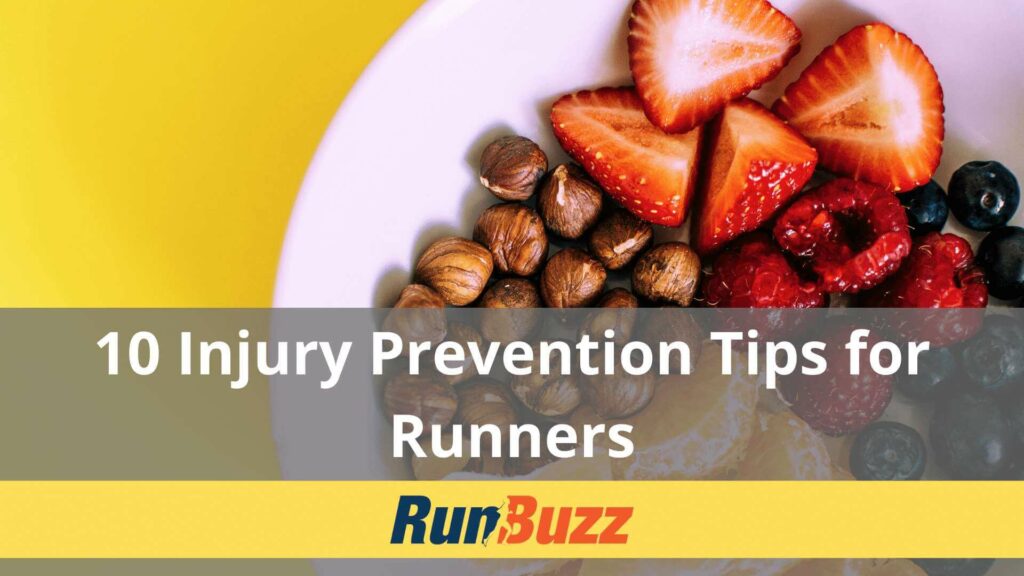When I was a new runner, I vividly remember making nearly every mistake in the book. I went from my first 5 mile race to my first marathon in under one year and, despite reading everything running-related I could get my hands on, I still foolishly believed I could power through injuries. Now, as a running coach with several years of coaching experience under my belt, I’ve found the discipline necessary to do whatever it takes to be able to run injury-free.
Here are ten injury prevention tips to help you avoid the same mistakes that I did!
1. Build Mileage Slowly
Just because you can run farther doesn’t always mean you should. Remember that when you contemplate taking your long run from 6 to 9 miles in one week. A standard rule is to not increase your overall weekly mileage, or your weekend long runs, by more than 10% at a time. 5% is a more conservative and recommended if you are a new runner.
2. Stretch
Research is still very mixed on whether or not stretching before running is effective at preventing injuries. If it feels good to stretch before you run then keep doing it. But, if you don’t feel like it’s helping you get into the running grove, you can save it for after (as I do) and warm-up by taking a brisk 5-10 minute walk. Dynamic warm-ups are recommended to help warm up muscles and get the blood flowing.
3. Foam Roll
One of the first injuries I dealt with was a pain in my knees due to a tight IT band. A friend suggested I start foam rolling, and the pain went away and never returned. A foam roller is a relatively inexpensive tool to invest in that will last you the rest of your running life and only takes a few minutes to use after a run.
4. Trigger Point
For more acute injuries that a foam roller may not be able to target, look into trigger point therapy. During my first marathon training cycle, I developed Achilles pain and shin splints that were so painful that I would have to stop mid-run and hobble home nearly in tears. My local running store suggested I try a Trigger Point massage ball, focusing on my soleus muscle.
Last update on 2025-06-29 / Images from Amazon Product Advertising API
5. Proper Recovery
Within 30 minutes of completing your run, aim to eat a 4:1 carb to protein ratio meal. This specific ratio has been shown to maximize immune function, restore energy, and rebuild the muscles you tore down during your run. After 30 minutes, the repair process is slower.
6. Fuel Right
It’s easy to think of fueling properly right before or after a run, but don’t forget that every meal you eat has the opportunity to help fuel your runs. I didn’t feel like a “real runner” until I stopped using long runs as an excuse to eat whatever I wanted and, instead, ate foods that would help me perform better. There are no scientific formulas for this – whatever your dietary needs are, just do your best to eat healthy at every meal!
7. Listen to Your Body
If I feel anything more than usual post-run soreness, I’ll take at least 2-3 days off before I try running again. If you’re injured, running further will only make your injury last longer. The hardest thing I’ve ever had to do as a runner is not run.
8. Practice Good Form
There are a few different theories on what the best running form is but, in general, keep your shoulders down, arms parallel to the ground, and hands loose (not in fists). Breathing techniques and foot strike patterns vary for each person, so do whatever feels right for you.
9. Get Proper Fitted Shoes
This seems like a no brainer, but when I started running I had no idea how much of an improvement fitted running shoes make! I started off with big box retailer generic running shoes and, when I finally invested in a pair of real running shoes, it felt like I was running on air. Understanding the difference between all the different types of shoes can be overwhelming, so don’t hesitate to go to your local running store and have them help you out, or check our my running shoe buyers guide.
10. Go Slow
When in doubt, slow down. It’s easy to get caught up in wanting to PR or ramp up mileage, but slow and steady wins the race every time (except on actual race day). Don’t forget to make some of your weekday runs easy runs. Don’t worry about pace. Just breathe in, enjoy the time, and be grateful that you have the ability to run.
- About the Author
- Latest Posts

Steve Carmichael is a running coach, sports performance coach, nutrition coach and has been a recreational runner for over 18 years. Steve holds multiple certifications as a certified running coach through the RRCA and USA Track and Field as well as he is a NASM certified personal trainer, and PN1-L1 certified nutrition coach.
Steve has been coaching since 2010 and has helped thousands of runners online and in the Central Ohio area maximize performance and run injury-free.
Steve is the founder of RunBuzz and Run For Performance.com. If you are interested in working with Steve though his online running and strength coaching services, feel free to reach out.











